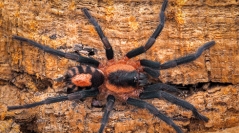

 European Journal of Taxonomy
947 (53) - Pages 53-87
European Journal of Taxonomy
947 (53) - Pages 53-87In this study, we describe two new species of Mesobiotus based on morphological data collected through light and scanning electron microscopy. Descriptions include DNA sequences of four commonly used molecular markers (18S rDNA, 28S rDNA, ITS-2, and COI). Mesobiotus efa sp. nov. was discovered in North-West Russia and belongs to the group of species with smooth cuticle, harmsworthi-type OCA, typical Mesobiotus claws IV with unindented lunules, and egg chorion with reticulated processes in form of ‘sharp wide cones’ or ‘cones with long slender endings’, egg process bases with well-developed crone of dark thickenings without finger-like projections, and egg shell surface between the processes with ridges without reticulation, areolation or semi-areolation. It can be distinguished from all know species of this group by a unique combination of morphological and morphometric characters. Mesobiotus vulpinus sp. nov. was found in the Russian Far East, and is similar to Mesobiotus mauccii by having an egg chorion with polygonal relief. The new species can be distinguished from M. mauccii by having a narrower buccal tube, by details of oral cavity armature, and by longer egg chorion processes. Furthermore, we provide results of the phylogenetic analyses of the genus Mesobiotus conducted in this study.